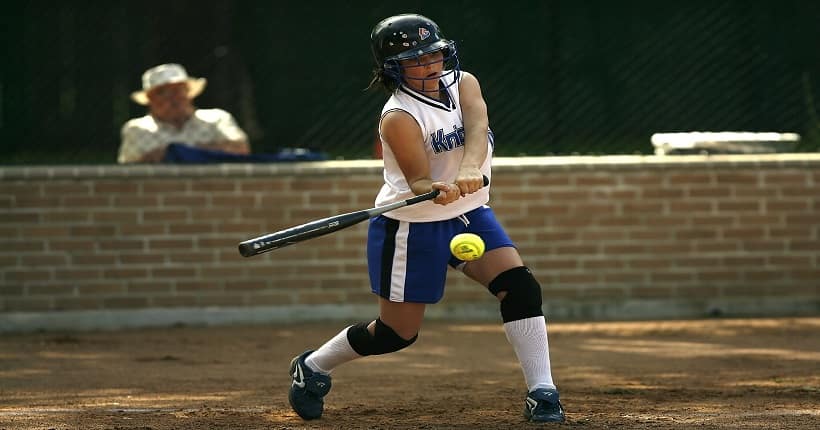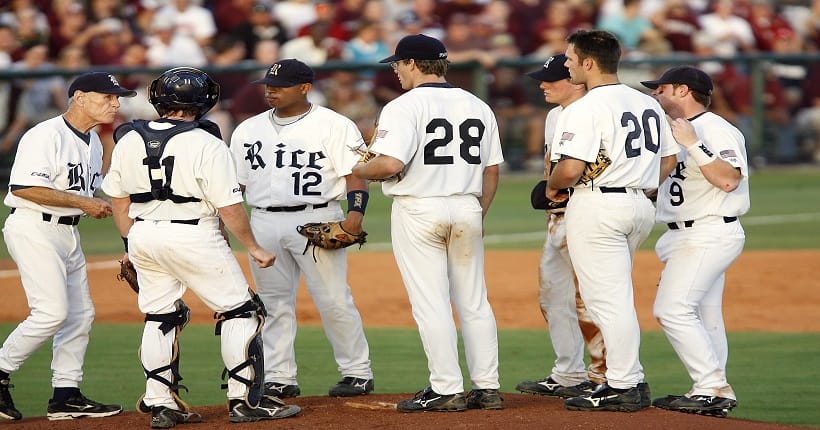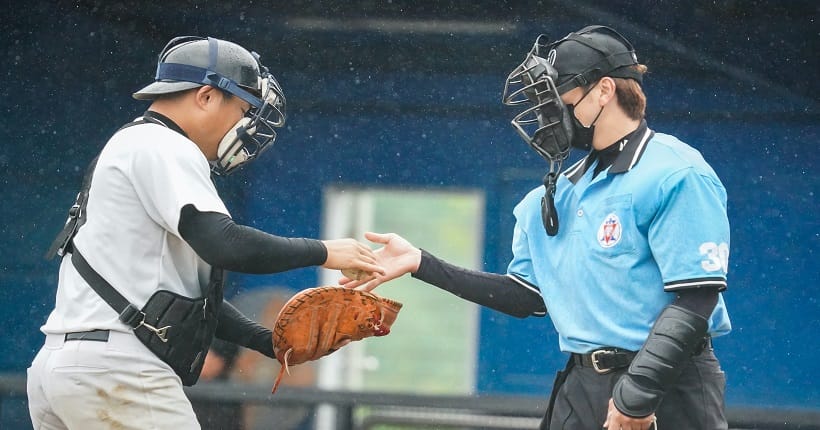Which Team Bats First In Baseball?
The home team bats first in baseball. In baseball, the home team always gets the advantage of batting first.
This allows them to set the tone for the game and potentially score runs early on. The visiting team then gets their turn to bat in the later innings. So, if you’re watching a baseball game, the team that is playing on its home field will be the first to step up to the plate.
Being able to bat first can give the home team an advantage as they have the opportunity to put pressure on the opposing team right from the start.
The Significance Of Batting Order In Baseball
Understanding the batting order in baseball is crucial for both players and fans alike. This strategic lineup determines the sequence in which players take their turns at the plate, and it plays a vital role in shaping the course of the game. In this article, we will explore the historical perspective on the significance of the batting order and delve into the role it plays in determining team strategies and tactics.
Historical Perspective on the Significance of Batting Order
In the early days of baseball, the batting order was not as meticulously arranged as it is today. Players often decided among themselves who would bat where, and it wasn’t until the late 19th century that managers began to recognize the importance of batting order strategy. The legendary baseball manager, Harry Wright, is often credited with establishing the concept of a fixed batting order in 1870.
- Harry Wright introduced the concept of a fixed batting order to optimize a team’s offensive capabilities.
- This new approach allowed managers to assign players based on their abilities to get on base, hit for power, or advance runners.
- By strategically placing these players in the lineup, managers aimed to maximize their team’s scoring potential and increase the odds of winning.
| Position | Player |
|---|---|
| 1 | Buckle McGraw |
| 2 | Sammy Chapman |
| 3 | Johnny Johnson |
| 4 | Bobby Robinson |
| 5 | Tommy Thompson |
| 6 | Charlie Clark |
| 7 | David Davis |
| 8 | Franklin Foster |
| 9 | George Grayson |
The above table represents a sample batting order, where each player has been assigned a position in the lineup. The order is based on a combination of factors such as a player’s batting average, on-base percentage, and ability to drive in runs.
Role of Batting Order in Determining Team Strategies and Tactics
The batting order is not just a random lineup; it is a strategic decision that can greatly impact the outcome of a game. Let’s explore the various ways in which the batting order influences team strategies and tactics:
- Leadoff Hitter: The player in the first position is often a player with a high on-base percentage and strong base-running skills. They set the tone by trying to get on base and put pressure on the opposing pitcher.
- Power Hitters: Players with a knack for hitting home runs or driving in runs often occupy the middle of the lineup. Their ability to generate offense can change the game with a single swing, making them a key component of a team’s strategy.
- Contact Hitters: The lineup may include players with exceptional contact skills, who are capable of consistently putting the ball in play. They are valuable in situations where moving runners around the bases is crucial.
- Pinch Hitters and Substitutions: As the game progresses, managers may use pinch hitters to take advantage of favorable matchups or make tactical substitutions to exploit weaknesses in the opposing team’s pitching.
By carefully organizing the batting order, managers can optimize their team’s offensive capabilities, exploit weaknesses in the opposing team’s defense, and create opportunities for scoring victories.
Understanding the significance of batting order in baseball provides players and fans with a deeper appreciation for the strategic elements involved in the game. The lineup not only determines who bats first but also has a profound impact on the overall flow and outcome of the match. By embracing the historical perspective and recognizing the role of batting order in strategy and tactics, we can better comprehend the complexities of America’s favorite pastime.
Major League Baseball Rules And Regulations
In Major League Baseball (MLB), determining which team bats first follows a set of rules and regulations specified by the league. The order in which teams take turns batting can have a significant impact on the outcome of the game. Let’s dive into the details of how MLB determines which team has the first turn at-bat.
Coin Toss:
As per MLB rules, before each game, the home plate umpire conducts a coin toss between the two team captains or managers. The winner of the coin toss gets to decide whether their team will bat first or choose a preferred fielding position.
Visitor Team Preference:
However, if the visiting team captain or manager expresses a preference for their team to bat first during the coin toss, this request will be honored, and the visiting team will have the first opportunity to bat.
Game Schedule:
In MLB, for regular-season games, the league office sets the schedule in advance, determining which team is the designated home team. The home team typically bats last, giving the visitor team the chance to bat first.
Over the course of MLB history, various rule changes and adaptations have impacted the determination of which team bats first. These changes aim to maintain fairness and maintain the integrity of the game.
American League vs. National League:
Historically, the American League (AL) and the National League (NL) had different rules regarding the designated hitter (DH). In the AL, the designated hitter would bat in place of the pitcher, while in the NL, the pitcher would bat. This difference influenced the batting order determination when teams from both leagues competed against each other in interleague games.
Rule Change in 2020:
In the 2020 season, due to the COVID-19 pandemic and the shortened schedule, MLB implemented a universal designated hitter rule. This rule applied to all games, regardless of the league, resulting in a more consistent approach to batting order determination.
Overall, Major League Baseball rules and regulations outline the processes and considerations for determining which team bats first. Whether it is through a coin toss, visitor team preference, or the game schedule, the league ensures fairness and equal opportunities for both teams in each game.
Home Field Advantage
One of the most intriguing aspects of baseball is the concept of home field advantage. When teams compete against each other, the advantage of playing in their home ballpark can greatly impact the outcome of the game. In this section, we will explore this concept and discuss how it influences the decision of which team bats first.
Exploring the Concept of Home Field Advantage in Baseball
Home field advantage refers to the perceived benefit that a team has when playing in their home stadium. The familiar surroundings, supportive fans, and other intangible factors can give the home team an edge over their opponents. This advantage is not unique to baseball, but it has a unique significance in this sport.
Impact of Home Field Advantage on Determining Which Team Bats First
When it comes to determining which team bats first in a baseball game, the home field advantage often plays a role. In most baseball leagues, including Major League Baseball (MLB), the home team has the privilege of making this decision. The reason behind this is to provide an additional advantage to the home team.
By allowing the home team to choose whether they bat first or second, they have the opportunity to tailor their game strategy based on various factors. For instance, if the team has a strong pitching lineup, they may choose to bat second to have a better chance of capitalizing on any early leads established by their pitchers. On the other hand, if the team is known for their powerful batting lineup, they may choose to bat first to put pressure on their opponents right from the start.
Moreover, the choice of which team bats first can also be influenced by the specific characteristics of the playing field. For example, if a team has a unique stadium with dimensions that favor certain batting styles or pitching strategies, they may strategically opt to bat first or second based on those factors. Overall, the home field advantage plays a significant role in determining which team takes the plate first.
Statistical Analysis of the Influence of Home Field Advantage on Game Outcomes
While the impact of home field advantage on game outcomes may seem subjective, statistical analysis has shown its undeniable influence. Researchers have found that teams playing at home tend to have a higher winning percentage compared to when they play away games. This difference in performance can be attributed to a combination of factors, including the familiarity of the home stadium, the support of the home crowd, and the psychological boost provided by playing in familiar surroundings.
Additionally, studies have shown that home teams tend to score more runs and have a more advantageous win-loss record when they bat last. This further highlights the strategic importance of choosing which team bats first. By batting later in the game, home teams have the advantage of knowing the score and game situation, allowing them to adjust their tactics accordingly.
Summary
Home field advantage is a significant factor in baseball that not only affects the outcome of the game but also plays a role in determining which team bats first. The familiarity and support provided by playing at home give teams a boost, ultimately influencing their decision on whether to bat first or second. Statistical analysis confirms the importance of this advantage, showing that home teams have a higher winning percentage and tend to score more runs when they bat last. So the next time you watch a baseball game, pay attention to which team has the privilege of batting first – it may give you insights into the strategic mindset of the home team.
/cloudfront-us-east-1.images.arcpublishing.com/pmn/EPDSF3PNHFCCZKLPPXHVIDBDOU.jpg)
Credit: www.inquirer.com
Coin Toss Or Umpire Decision
When it comes to the simple yet crucial question of which team bats first in a baseball game, two common methods are predominantly used: the coin toss and the umpire’s decision. These methods determine which team gets the opportunity to start off the game with a potential scoring advantage. Let’s take a closer look at each method and how it impacts the game.
Explaining different methods used to determine which team bats first
In baseball, the decision of which team bats first can be determined through either a coin toss or the umpire’s decision. These methods are employed to ensure fairness and impartiality in the game. Whether it’s the flip of a coin or the umpire’s own careful judgment, both methods play a crucial role in setting the stage for the game ahead.
Examination of the coin toss and its relevance in baseball
The coin toss is a familiar method used in a wide array of sporting events to determine various aspects of the game. In baseball, it acts as a fair and random way to decide which team bats first. Typically, the home team captain will call the coin toss, choosing between heads or tails. The umpire then flips the coin, and if the captain’s call matches the outcome, their team gains the advantage of batting first.
This seemingly simple act of tossing a coin holds immense significance. By allowing chance to determine the batting order, it eliminates any possibility of bias or unfair advantage, ensuring a level playing field for both teams.
Role of the umpire in deciding which team bats first
Alternatively, the decision of which team bats first may be left to the discretion of the umpire. This approach places responsibility on the umpire to assess the circumstances and make an informed decision. Factors such as field conditions, weather conditions, and even team preferences can influence the umpire’s judgment.
In making this decision, the umpire must consider various factors to maintain integrity and promote a fair game. Their impartial choice ensures that neither team gains an unfair advantage based on their preferences or strategies. The umpire’s decision maintains the core principles of baseball, allowing each team an equal shot at scoring runs and securing victory.
When it comes to determining which team bats first in a baseball game, both the coin toss and the umpire’s decision play vital roles. While the coin toss provides a simple yet random method, the umpire’s judgment factors various game-related elements to ensure fairness. Ultimately, these methods contribute to the spirit of the game, providing equal opportunities for both teams to showcase their skills and chase victory.
The Tradition And Importance Of The Home Team Batting First
Historical Development of the Tradition
The tradition of the home team batting first in baseball has deep historical roots that date back to the early days of the sport. In the early years, there were no formal rules about which team would bat first. However, as baseball gained popularity and organized leagues were formed, a convention emerged where the home team would have the privilege of batting first.
This convention was rooted in the belief that the home team should have certain advantages, including the opportunity to set the tone of the game and potentially gain an early lead. It was seen as a way to honor the home team and give them a slight edge in the competition.
Evolution of Baseball Customs and Etiquette Related to Batting Order
As baseball evolved and became more formalized, customs and etiquette related to the batting order also developed. It became expected that the home team would bat first, and the visiting team would bat second.
This tradition was reinforced by the introduction of official rules and regulations governing the game. For example, the first official set of rules, known as the Knickerbocker Rules, established in 1845, included a provision specifying that the home team would have the first opportunity to bat.
Through the years, these customs and etiquette surrounding batting order have become deeply ingrained in the fabric of the sport. They are now considered an essential part of baseball lore and a symbol of respect for the home team.
Significance of First At-Bats and Crowd Engagement
The tradition of the home team batting first holds significant importance in terms of the game’s dynamics and crowd engagement. The first at-bats of the game are often filled with anticipation and excitement, signaling the start of the match and setting the stage for the rest of the game.
When the home team steps up to bat first, the crowd has the opportunity to rally behind their team, creating an electric atmosphere in the stadium. The cheering and support from the home crowd can provide an emotional boost to the players and potentially influence the outcome of the game.
Additionally, the tradition of the home team batting first ensures fairness and balance in the game. Each team has an equal chance to bat first in alternating games, ensuring a level playing field for both teams throughout a series.
In summary, the tradition of the home team batting first in baseball has a long and storied history. It has evolved over time, becoming an integral part of the sport’s customs and etiquette. The significance of the first at-bats and the crowd engagement associated with them make this tradition an essential and highly anticipated aspect of every baseball game.
Exceptions To The Traditional Practice
Traditionally, in the game of baseball, the home team always has the privilege of batting last. However, there are certain situations where the order can deviate from this traditional practice. These exceptions can provide interesting insights into the dynamics of the game, and understanding them can deepen your knowledge and appreciation for baseball.
Analysis of situations where the visiting team bats first
Although rare, there are instances in which the visiting team has the opportunity to bat first. One such situation is during postseason play, particularly in playoff and World Series games. This deviation comes as a result of a scheduling decision made by Major League Baseball. By having the visiting team bat first, they can potentially gain an early advantage by putting runs on the board before the home team even steps up to the plate.
Another scenario where the visiting team bats first is in special exhibition games or tournaments, like the MLB All-Star Game or World Baseball Classic. These events often have their own unique rules and formats, aiming to provide fans with memorable experiences. Switching up the batting order in these instances adds an element of excitement and unpredictability to the game.
Modern-day instances where deviations occur
In addition to postseason play and special exhibitions, modern-day instances of batting order deviations can also occur due to unforeseen circumstances such as weather conditions. If a game is postponed or delayed due to inclement weather, the teams might agree to switch the batting order to expedite the game and minimize further disruptions. This ensures that both teams have a fair chance to complete the game and potentially avoids unnecessary complications.
Reasons behind exceptions and their implications
The reasons behind these exceptions to the traditional batting order can vary. From strategic advantages in playoff games to creating unique experiences for fans during special events, these deviations serve specific purposes. By allowing the visiting team to bat first in certain situations, it evens out the playing field and adds intrigue to the game.
Moreover, these exceptions emphasize the importance of adaptability and flexibility in baseball. The ability to adjust and make the best of unexpected circumstances is a vital trait for both teams and players. It showcases the resilience and ingenuity of the sport and highlights the depth of strategic thinking that goes into the game at all levels.
While the traditional practice of the home team batting last remains the norm in the majority of baseball games, understanding the exceptions and their implications adds an extra layer of appreciation for the intricacies of America’s pastime. So, the next time you watch a game and notice a deviation from the usual batting order, you can appreciate the unique circumstances and the strategic considerations that influenced that decision.
Strategies And Considerations In Batting Order
In baseball, the batting order plays a crucial role in determining the team’s offensive performance. The way the players are arranged can drastically impact the outcome of the game. Coaches and managers meticulously plan the batting order, considering various strategies and factors to maximize their team’s chances of success.
Overview of common strategies in arranging the batting order
When constructing the batting order, coaches often explore different strategies to exploit their team’s strengths and exploit their opponent’s weaknesses. Here are a few common strategies:
- Leadoff hitter: The leadoff hitter is typically skilled in getting on base and setting the tone for the rest of the lineup. They are fast, agile, and have a good eye for pitches.
- Power hitters: These hitters are known for their ability to hit the ball with tremendous power. Placing power hitters in the middle of the lineup ensures that they have more opportunities to drive in runs.
- Contact hitters: Contact hitters are skilled at putting the ball in play, usually with a high batting average. They are often placed towards the top of the lineup to maximize their chances of getting on base.
- Platoon system: This strategy involves alternating between left-handed and right-handed hitters depending on the opposing pitcher’s throwing arm. It aims to exploit any weaknesses the opposing pitcher may have against a particular batting hand.
Analyzing the impact of different batting orders on team performance
It is essential for coaches and managers to analyze the impact of different batting orders on team performance. By carefully studying statistics and past performance, they can make informed decisions about how to arrange their lineup.
For instance, a study conducted by baseball analysts found that batting the team’s best hitters in the first and second spots in the lineup increases the likelihood of scoring runs. This is because these hitters are more likely to come up to bat with runners already on base.
Similarly, by placing power hitters in the middle of the lineup, teams increase their chances of driving in runs and creating scoring opportunities. However, it’s crucial to balance the lineup to avoid putting too many power hitters together, as it can make the team vulnerable to strikeouts and leave the bottom of the lineup weaker.
Role of analytics and data-driven decision making in batting order construction
In recent years, the role of analytics and data-driven decision making has significantly influenced the construction of batting orders. Teams now utilize advanced statistical analysis, player performance metrics, and matchup data to make calculated choices.
Analytics can provide valuable insights into a player’s performance against specific pitchers, pitch types, or situations. This enables coaches and managers to make more informed decisions when constructing the batting order.
Data-driven decision making has revolutionized the game, as it allows teams to identify hidden patterns and optimal lineup combinations. By integrating both traditional baseball wisdom and cutting-edge analytics, teams can formulate batting orders that maximize their chances of success.
Frequently Asked Questions On Which Team Bats First In Baseball?
Does The Visiting Team Always Bat First?
No, the visiting team does not always bat first. The decision of which team bats first is determined by a coin toss before the start of the game.
Why Does The Home Team Bat First?
The home team bats first in baseball for the advantage of setting the tone and putting pressure on the visiting team. It also allows the home team to score runs early, giving them a chance to control the game from the beginning.
How Do You Determine Who Bats First In Baseball?
The team that bats first in baseball is determined by a coin toss before the game.
Does The Home Team Always Bats Last?
Yes, the home team always bats last in a baseball game.
When Does The Batting Order Get Determined For A Baseball Game?
The batting order is typically decided before the game by the team’s manager, based on factors like player performance and strategy.
Conclusion
The team that bats first in a baseball game is determined by a coin toss before the game starts. The winning team gets to choose whether they want to bat first or second. This decision can have a strategic impact on the game, as it affects the team’s ability to score runs and put pressure on the opposing team.
Ultimately, the order of batting does not guarantee victory, but it can certainly play a significant role in the outcome of the game.







